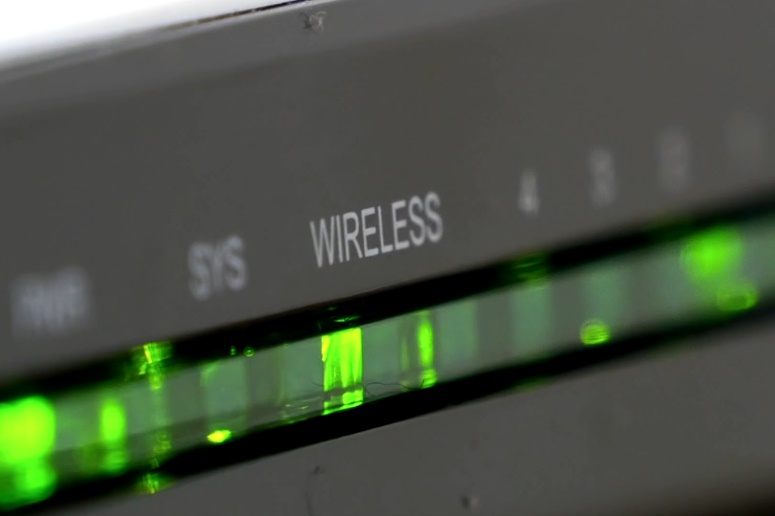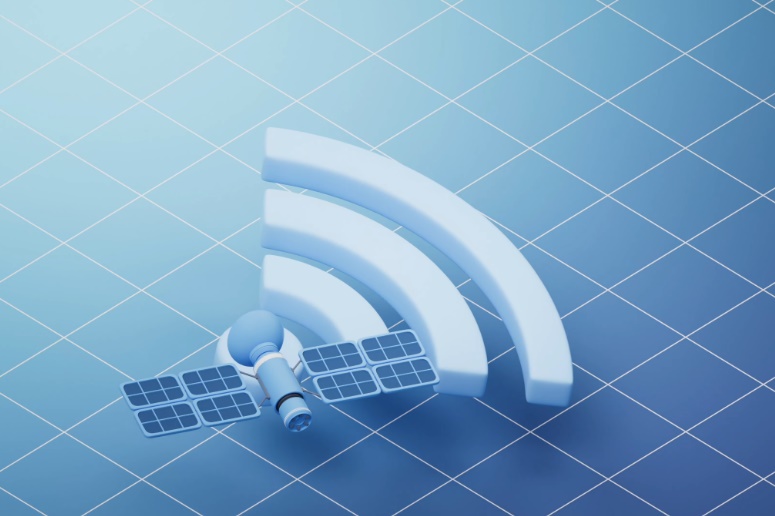Ever wondered why your Wi-Fi sometimes feels like a snail on a treadmill? Well, chances are you’re on the wrong channel.
Picking the right channel can be the difference between smooth streaming and a buffering nightmare. So, let’s get you up to speed!
Fun Fact: Did you know that Wi-Fi channels are like lanes on a highway? The more devices connected, the more congested it gets!
Frequency Bands

5GHz is like the cool older sibling of 2.4GHz. It’s faster, less congested, and offers a smoother online experience. But why?
- Speed: 5GHz can offer connection speeds up to a whopping one gigabit, while 2.4GHz tops out at about 300 megabits. 🚀
- Less Interference: Unlike the crowded 2.4GHz, which has to deal with interference from devices like old cordless phones and baby monitors, 5GHz has a clearer path.
- Range: Here’s the catch – 5GHz might not be as good at penetrating walls or covering long distances as 2.4GHz. But hey, no one’s perfect!
Pro Tip: If you’re in a large house or have many walls, consider using Wi-Fi extenders or mesh systems to boost your 5GHz signal.
5GHz Frequency Bands
Imagine channels as lanes on a highway. The wider the lane, the more data can flow through, leading to faster speeds. But, there’s a trade-off: wider channels can also mean fewer available.
- Width: This determines how much data can pass through. Wider channels (like 80MHz or 160MHz) can deliver faster speeds but might be more prone to interference.
- Available: In the 5GHz spectrum, there are multiple channels, such as 36, 40, 44, and so on. Each has its own pros and cons, which we’ll dive into later.
Fun Fact: Think of channel width like lanes on a road. A four-lane highway can handle more cars than a two-lane one, but it also takes up more space!
Factors Affecting Performance
When I first delved into the world of Wi-Fi, I was amazed at how many factors could affect the performance of a single channel. Let’s break them down:
- Interference: Just like when you’re trying to have a conversation in a noisy room, your devices can struggle to communicate on a congested channel. Common sources of interference include other Wi-Fi networks, cordless phones, and even microwaves.
🎤 Pro Tip: Keep your router away from other electronic devices to minimize interference.
- Overlapping: In the 5GHz spectrum, channels are designed to avoid overlap, unlike the 2.4GHz range. However, when using wider widths, there’s a possibility of overlap. Overlapping can cause co-channel interference, reducing your Wi-Fi speed.
- Device Compatibility: Not all devices are created equal. Some older devices might not support certain 5GHz, which can limit your options. Always check the specifications of your devices before making a selection.
🎉 Fun Fact: The 5GHz spectrum was designed to have non-overlapping channels to improve Wi-Fi performance.
Determining the Best Channel

Like finding a needle in a haystack. But with the right tools, it’s a breeze
- Wi-Fi Scanning Tools: These are your best friends in the quest for the optimal channel. They assess usage and congestion in real-time. I personally use Wi-Fi analyzer apps on my smartphone to get a visual representation of congestion.
🎤 Pro Tip: Regularly scan your environment, especially if you notice a sudden drop in performance.
Step-by-step Guide
- Download a reliable Wi-Fi analyzer app on your smartphone or computer.
- Open the app and look for the channel graph or spectrum.
- Identify the least congested channel. This is usually the one with the fewest networks and the lowest signal strength from other networks.
- Log into your router’s web interface.
- Navigate to the Wi-Fi settings and select the identified channel.
- Save changes and restart your router if necessary.
Tips for Finding the Optimal Channel
Your environment plays a huge role. For instance, in urban areas with many networks, you might want to choose a less common channel. In more isolated areas, interference from other devices might be your main concern.
Pros and Cons
| Channel | Pros | Cons |
|---|---|---|
| 36 | Less congested in many areas. | Might not be supported by older devices. |
| 40 | Good balance between speed and range. | Can be crowded in urban settings. |
| 44 | Often overlooked, leading to less congestion. | Limited support on some devices. |
| 149 | A higher frequency can mean faster data rates. | Might face interference from other devices. |
| 153 | Less interference from common household devices. | Not always supported by all devices. |
| 157 | Good for environments with fewer networks. | Can be affected by weather radar in some regions. |
| 161 | Wide coverage and good data rates. | Potential for overlap |
🎉 Fun Fact: Channels in the higher end of the 5GHz spectrum (like 149 and above) are called Unlicensed National Information Infrastructure (U-NII) bands and can offer faster speeds!
Optimizing 5GHz Channel Selection

When I first started optimizing my home Wi-Fi, I was a bit overwhelmed. But with a bit of research and some trial and error, I’ve found some techniques that really make a difference:
- Router Settings: Dive into your router’s settings. Most modern routers have an option to automatically select the best channel. However, if you’re like me and love to tinker, you can manually the best based on your environment and needs.
🎤 Pro Tip: Always remember to save and restart your router after making changes to ensure they take effect.
- Bonding: This is where you can combine multiple channels to create a wider channel, which can increase data throughput. However, it’s a double-edged sword. While it can offer faster speeds, it also increases the chance of interference, especially in crowded areas.
🎉 Fun Fact: Bonding can be likened to turning a two-lane road into a four-lane highway. More lanes can mean faster speeds, but also more potential for traffic jams!
- Width Options: You can adjust the width of your channel (20MHz, 40MHz, 80MHz, etc.). Wider channels can provide faster speeds but are more susceptible to interference. It’s all about finding the right balance for your specific environment.
Real-World Scenarios and Case Studies

- Urban Apartment: Living in a bustling city, I found that the 5GHz band was a lifesaver. With so many networks around, the 2.4GHz band was congested. However, after switching to 5GHz and selecting 149, my speeds improved dramatically. The higher frequency meant faster data rates, and there was less interference from other devices.
- Suburban Home: My friend lives in a suburban area with fewer networks around. She initially used the 2.4GHz band but found that certain household devices caused interference. After switching to the 5GHz band and selecting 44, her connection became much more stable.
- Crowded Office Space: In a shared office space with multiple networks, finding the right channel can be a challenge. Using a Wi-Fi analyzer, we identified that 36 was the least congested. After switching to this channel, the office Wi-Fi became much more reliable.
Best Practices for 5GHz Channel Selection
- Regularly Reassess: Your environment can change. New networks might pop up, or nearby devices might change. It’s a good idea to periodically check and adjust your settings.
- Use Wi-Fi Analyzers: These tools can give you a visual representation of congestion, helping you make an informed decision.
- Consider Your Environment: Think about the physical layout of your space and any potential sources of interference. If you’re in a densely populated area, you might need to experiment with different channels to find the best fit.
🎤 Pro Tip: Don’t be afraid to experiment! Sometimes the best way to find the optimal channel is through trial and error.
FAQ
Navigating the world of Wi-Fi can be a bit daunting, especially with all the technical jargon flying around. But don’t worry, I’ve got you covered! Here are some common questions I’ve come across:
What is the difference between 2.4GHz and 5GHz frequency bands?
The 2.4GHz band is older and more commonly used, offering a longer range but potentially slower speeds due to congestion. The 5GHz band is newer, offering faster speeds but at a shorter range. It’s also less congested, making it ideal for urban areas.
Can I manually select a channel on my router?
Absolutely! While many routers are set to automatically select the best channel, you can dive into your router’s settings and choose one manually. This can be especially useful if you’re experiencing interference on the default.
How often should I check and change my router’s channel?
It’s a good practice to check your performance every few months or if you notice a sudden drop in your Wi-Fi speed. With the ever-changing environment around us, the optimal channel today might not be the best tomorrow.
What do I do if my devices don’t support the recommended channel?
If a device doesn’t support a particular channel, you might need to select a different one. Always ensure that the one you choose is supported by all your devices to avoid connectivity issues.
How can I minimize interference on my 5GHz network?
Position your router in a central location, away from other electronic devices. Use Wi-Fi analyzers to identify the least congested channel. Consider the physical layout of your space and any potential sources of interference.
🎤 Pro Tip: Walls, especially thick ones, can attenuate (weaken) Wi-Fi signals. If you’re facing issues in a particular room, consider moving the router or using Wi-Fi extenders.
Conclusion
Choosing the right 5GHz channel for your router is more than just a technical decision; it’s about ensuring seamless connectivity for all your devices. The world of Wi-Fi is vast and ever-evolving, but with the right knowledge and tools, you can optimize your network for peak performance.
I encourage you to experiment with different channels, use Wi-Fi analyzers, and stay updated with the latest in wireless technology. Remember, a well-optimized Wi-Fi network can make all the difference in your online experience. –


